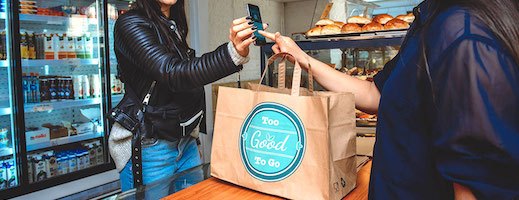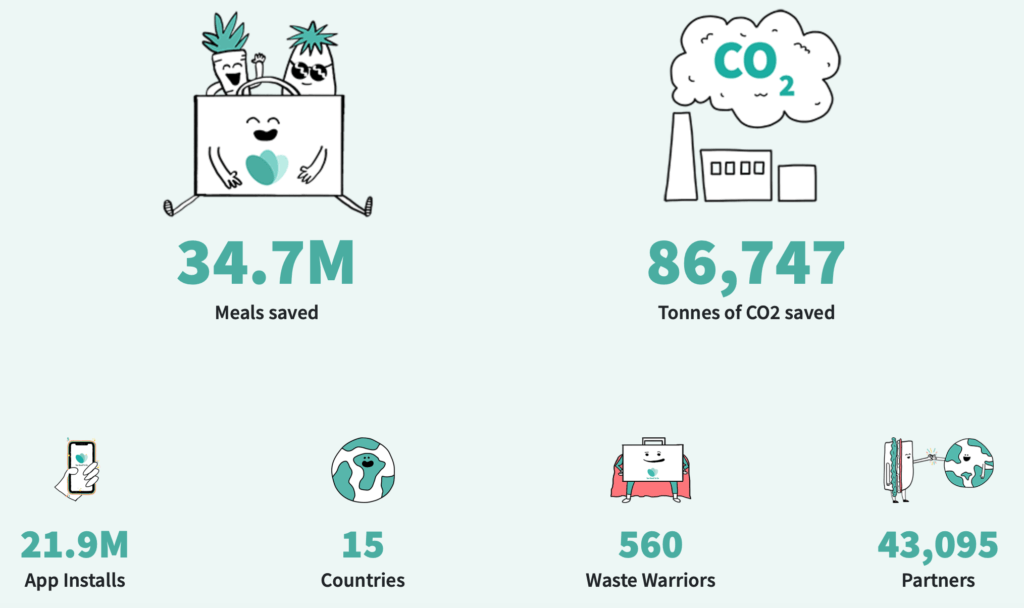Too Good To Go: A Win-Win-Win Situation

Too Good To Go is the world’s leading platform for reducing food wastage. The free smartphone app connects local restaurants, hotels and retail businesses that have unsold, surplus food with local customers.
Introduction
1.3 billion tons of food is lost or wasted each year (approximately a third of the food produced for human consumption). Food waste contributes roughly 8% of total greenhouse gas emissions.

Too Good To Go (TGTG) is the world’s leading platform for reducing food wastage. TGTG was established in Denmark in 2015- a smartphone app purpose-built to reduce food waste and carbon dioxide (CO2) production. The free smartphone app connects local restaurants, hotels and retail businesses that have unsold, surplus food with local customers.
The platform creates a marketplace that connects businesses that have surplus food with consumers looking to rescue their meals. Rather than be discarded at the end of the day, these foods can be purchased at a reduced retail price and collected by consumers in-store at a pre-set time (often 30 minutes before closing).
How it works
- Download the free app and browse all the available offers in your area (using an integrated map)
- Make your selection and pay via the app (using services such as Apple Pay and PayPal)
- Show your in-app order confirmation voucher to staff on collection
Value Creation
Value is created for the consumer by providing high-quality restaurant food sold at up to a 70% discount on the original price. Additionally, for environmentally conscious consumers, purchasing through the app reduces CO2 production. Also, the platform creates an opportunity where end users can discover restaurants, bakeries, hotels and grocery stores that they otherwise would not previously purchase products from.
The value proposition for the suppliers is that surplus food that would otherwise go to waste can be sold at a reduced price, which creates further revenue by selling through Too Good To Go. The platform also attracts and acquires new customers for businesses that have signed up to the app. In addition, partnering with TGTG boosts the corporate social responsibility image of the company.
Scalability and Sustainability
As with any start-up, scalability and sustainability are huge barriers. However, food waste is a global issue and the platform benefits the businesses, the customers, and the environment in a win-win-win situation.
Since 2015, Too Good To Go has saved 34.7 million meals and 86,747 tons of CO2. Over the four years, there have been strong cross-network effects: more users have led to more businesses partnering with the platform and vice versa. The app has been downloaded a total of 21.9 million times and TGTG has partnered with 43,095 retailers. TGTG currently employs 560 “waste warriors” and has successfully scaled across 15 different countries.
TGTG’s vision to empower everyone to take action against food waste makes all stakeholders involved in part of an important movement and is a “certified B corporation” for using business as a force for good. In a short period of time, it has shown exponential success with a 200% increase in revenues between 2018 and 2019. The primary source of the firm’s revenues come from taking a cut on meals sold through the app, as opposed to a membership fee.
Conclusion
To date, TGTG has brought in €16 million in investment. CEO and co-founder, Mette Lykke projects that 100 million meals will be saved from being wasted by the end of 2020. TGTG is currently expanding its offerings to the US market with plans to start up in New York and Boston by the end of 2020. 40% of the food in the US goes to waste, which is a loss of $160 billion. While it is the world’s largest B2C platform aiming to fight food waste, it is now facing competition from similar apps such as Food for All, Olio and Karma. However, while network effects are clustered, TGTG’s global scale gives it an edge over the competition which are only local threats in particular geographies. There is also a risk of disintermediation since once businesses have developed a customer base, they can bypass Too Good To Go. Several restaurants already sell off their surplus products before they close at a reduced price. However, research has shown that reducing food wastage is a low priority for businesses. Although there is a wish to reduce waste, setting up a separate initiative to resell stock is both time and money intensive. Therefore, TGTG provides a helping hand so businesses can focus on higher priority operations.
Sources
https://consumervaluecreation.com/2019/03/11/battle-of-the-food-waste-too-good-to-go/
https://www.weforum.org/agenda/2020/03/app-leftovers-fight-food-waste-togoodtogo/
https://zerowasteeurope.eu/wp-content/uploads/2020/01/zero_waste_europe_CS7_CP_TooGoodToGo_en.pdf
https://www.bbc.com/news/business-50974009
https://www.retaildetail.eu/en/news/food/too-good-go-expands-united-states





Wow, this sounds like a great initiative. It is great that they have come up with a business solution to a problem that many NGOs try to solve, often with little efficiency. While I agree with you that there will be strong network effects, I believe it will be difficult to ever leverage a cross-region network effect. The food distribution and collection has to be localized. However, may be global chains ( e.g. McDonald’s, KFC etc.) can create a “global” buzz, thereby generating some broad network effects (not through direct benefit of the product – food- on the platform, but from social acceptance of being on the platform). Thanks for sharing!
I love the business model – the name Too Good To Go sums up my belief precisely. However, as you mentioned, scalability and sustainability are big issues for platform businesses, regardless of whether we personally see the value in the service at first glance. I think the app could potentially benefit from having more of an exploration function built in, e.g., smart/varying recommendations for buyers to keep things fun and interesting, or recommendations combining recipes with local availabilities.